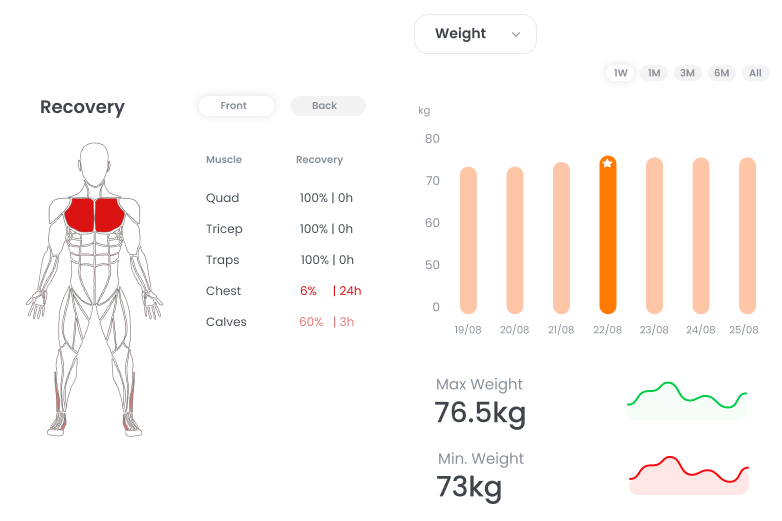Evolution Statistics
Training
A suitable training plan should prioritise the client’s safety, avoiding exercises or intensities that may lead to injury. To achieve this, the personal trainer should aregularly monitor the client’s progress.
To support professionals in supervising their clients’ health and well-being in terms of physical training, Fitcore provides aTo support professionals in supervising their clients’ health and well-being in terms of physical training, Fitcore provides a training history and real-time statistics for each athlete, allowing the trainer to understand where the client is on their fitness journey and what strategy to adopt.
The training history view allows you to see all exercises performed by the athlete to date, including information on the number of sets, repetitions, supersets, and load level. Real-time statistics show how many sessions were completed per week and track exercise progression - with metrics such as load log and 1RM (one-rep max) per exercise.
Nutrition
To support athletes in fully adhering to their meal plan, Fitcore provides a set of statistics designed to help them stay focused on their diet.
The client can view and monitor the number of calories and macronutrients consumed and remaining each day, according to their nutrition plan. On the same screen, the daily target for carbohydrate, protein, and fat intake is displayed, along with the amount still required to reach the goal.
At the end of each meal, the athlete is asked to rate their compliance on three levels: very good, fair, or poor. A summary table of these ratings is generated, giving both the professional and the client a clear overview of the athlete’s adherence to their nutritional plan.
Visual Recovery
In the visual recovery statistics, a human body figure is displayed, highlighting the muscle groups the athlete has trained over the past 24, 48, and 72 hours, based on their exercise history.
This feature provides both the client and the trainer with an overview of physical fatigue, indicating which muscle groups have been most engaged and which may require more attention. It enables better workout planning to ensure clients are not overexerting themselves, leading to faster recovery and greater success in achieving their goals.

.png)





.png)
